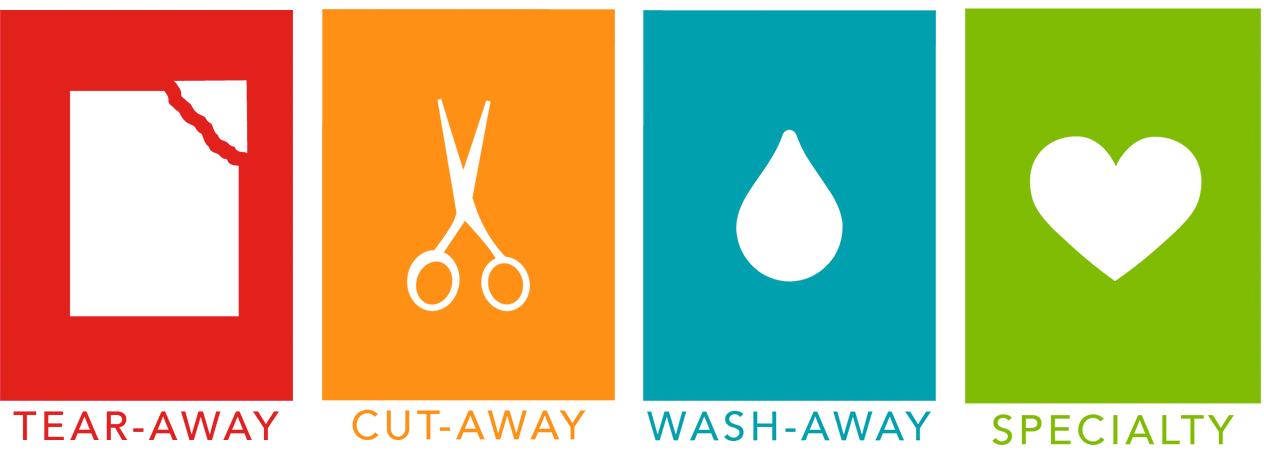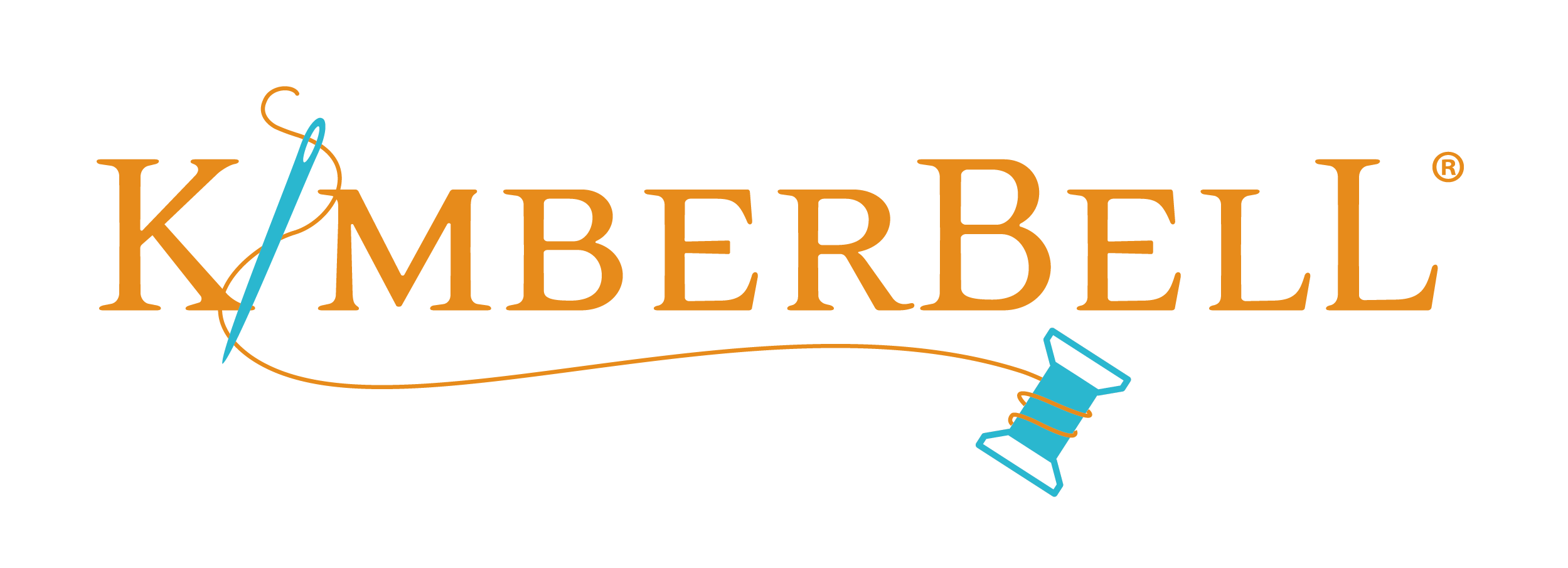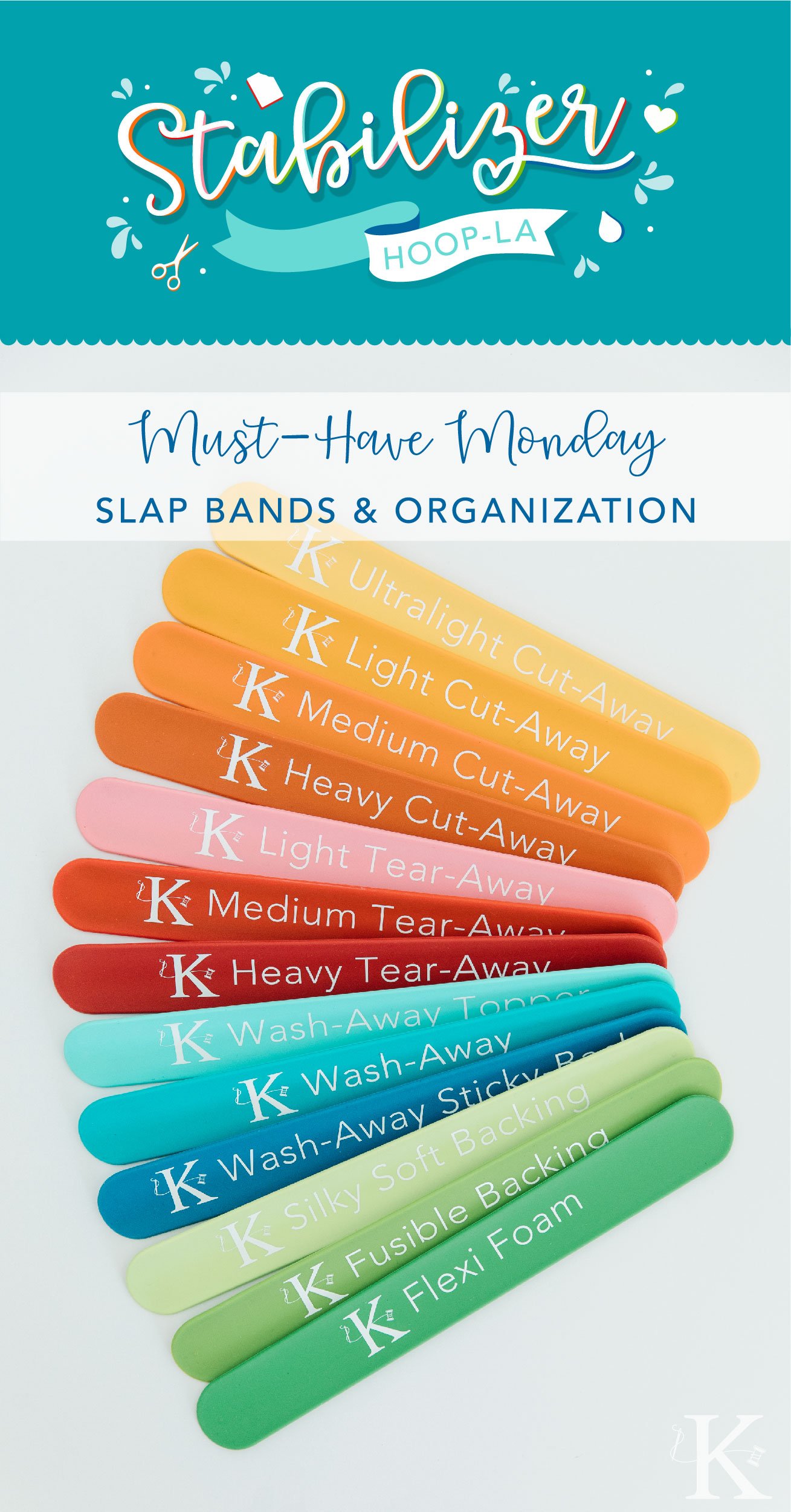All About Stabilizer


Stabilizer is an essential part of machine embroidery. But with so many options available, how do you know which type of stabilizer to choose?
At the Kimberbell Product Development Lab, we use a variety of stabilizers on multiple machines all day, every day. So we’ve learned a trick or two! Here’s a quick look at what stabilizer is, why embroiderers use it, and how to choose the right stabilizers for your projects.
What is Stabilizer?
Stabilizer is a woven or non-woven material, often hooped behind fabric, that provides support and prevents shifting/stretching/distortion during embroidery.
Why Embroiderers Use Stabilizer
Fabric is pulled and pushed every which way during the embroidery process, with the fibers continually shifting around to make room for the stitches. Without the right stabilizer reinforcing the fabric and creating a solid foundation, your embroidery will have gaps and puckering and all kinds of problems.
The Types of Stabilizer
There are many types of stabilizer, including topping, Tear-Away, Cut-Away, Wash-Away, and Specialty Stabilizers, all available in a variety of weights. Let’s take a closer look at the most frequently used stabilizers:
Topping
Topping (which looks a lot like the plastic wrap found in every kitchen) is a stabilizer used on top of the fabric being embroidered. You’ll want to use topping to prevent stitches from sinking into a high-pile fabric such as terry cloth. Hoop topping with your fabric to hold the fabric down and the design will sit nicely on top, right where you want it. After embroidery is complete, topping either tears away or dissolves with water.

Tear-Away
Tear-Away tears easily and neatly away from stitched areas. Ideal for use with stable, non-stretch fabrics like cotton, denim, and terry cloth, tear-away comes in a variety of weights. Use a light Tear-Away for light density designs and heavier Tear-Away for designs with medium to heavy stitch densities. Tear-away is perfect for projects where you don’t want the stabilizer to remain! If you’re wondering if a stabilizer is tear-away or cut-away (they can look alike), then do the tear test: if it rips easily, it’s tear-away. Tear-Away also comes as “soft” or “firm.” Soft is more like cloth and is fuzzier when it tears. Firm is more paper-like and tears crisply.
Cut-Away
Cut-away is a fibrous material and does not tear. As its name implies, you have to trim the excess stabilizer away with scissors. Use cut-away on stretchy fabrics like t-shirts and other knits, or for any project where the stabilizer needs to remain behind to give continued reinforcement. When choosing your cut-away weight, take a look at your design’s stitch count. The higher the stitch count, the heavier your backing should be.
Wash-Away
Wash-away is a thin, fibrous, pliable material that easily dissolves in water. Ideal for cutwork, freestanding lace, baskets, and more, wash-away adds stability during embroidery but is completely rinsed away afterwards. If you’re wondering if your stabilizer is wash-away, add a little water to the corner and if it becomes sticky, it’s wash-away! Wash-away is particularly helpful in intricate little spots where it would be very difficult to pick out tear-away.
Specialty
In addition to the basics described above, there are also many specialty backings and other helpful products that add stability, including fusible & sticky-back stabilizers/interfacing, no-show mesh (wonderful for projects like quilts!) and Terial Magic, a starchy spray that gives fabric extra strength. You’ll want to do some experimenting to see which products you like best. Just remember, the general rule of thumb is the heavier the design, the heavier your stabilizer needs to be!
To learn more about stabilizers, please watch these Tuesday Tips with Laurie:
All About Stabilizer: https://youtu.be/lTp3jl_PYV0
Prevent Puckering: Stabilizer and More https://youtu.be/guMLJIN7d6k
Stabilizers Part 2! Including Shapeflex! https://youtu.be/i57rPT2Nqp8
Floating Stabilizer: https://youtu.be/I-g1VwhZ5k0



